HARDLOCK® Nut installation
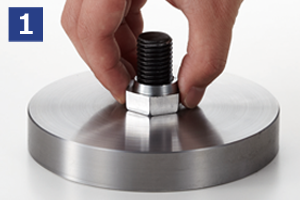
Use a tightening tool (spanner, torque wrench etc.) to tighten the Convex Nut to the appropriate torque for the application.
The convex nut has the same strength class as a regular hexagon nut and can therefore be tightened to its maximum limit.
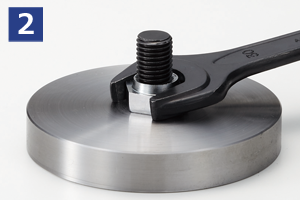
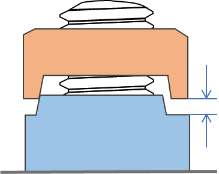
Install the Concave nut onto the Convex nut manually by hand until it no longer turns (in other words, until prevailing torque is generated). Make sure that there is a gap of more than 1 thread pitch between the nuts.
If the gap is less than 1 pitch, there may be a chance that sufficient locking effect will not be produced so please refrain from using HARDLOCK® Nut with the bolt.
(The same conditions apply for reuse.)
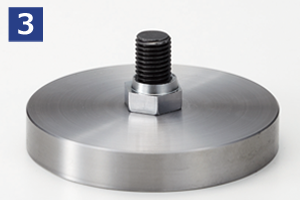
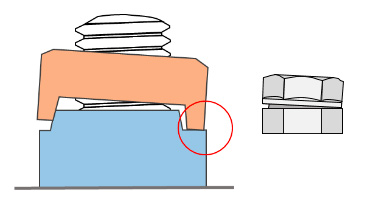
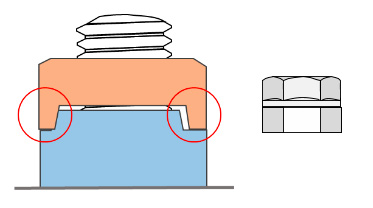
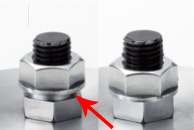
Use a torque wrench to tighten the Concave nut with the recommended torque set by HARDLOCK Industry Co., Ltd.
If it is difficult to manage the tightening torque of the Concave nut, please use “one-sided contact” as a guide for ensuring locking power.
When tightening the Concave nut on to the Convex nut, one side of the nuts will first come into contact, which gives an indication of sufficient locking effect (The Concave nut will slightly incline after the contact between the protrusion and the recess.). When one-sided contact is achieved, the tightening torque rapidly increases.
By applying additional torque , the nuts will come into full contact. This state produces the ultimate locking effect of the HARDLOCK® Nut, but further tightening may cause the breakage of bolt threads.
It is recommended to stop tightening the concave nut when the nuts come into full contact even though the applying torque is less than the maximum of recommended tightening torque.
Even after correctly tightening the Concave nut with the torque within the range of recommended tightening torque, there may remain a gap between the nuts due to the tolerance of bolt diameter.
Even in this condition, sufficient locking effect is secured but the Concave nut can be further tightened to come into one-sided contact or full contact even with more torque than the recommended torque to better ensure locking effect.

